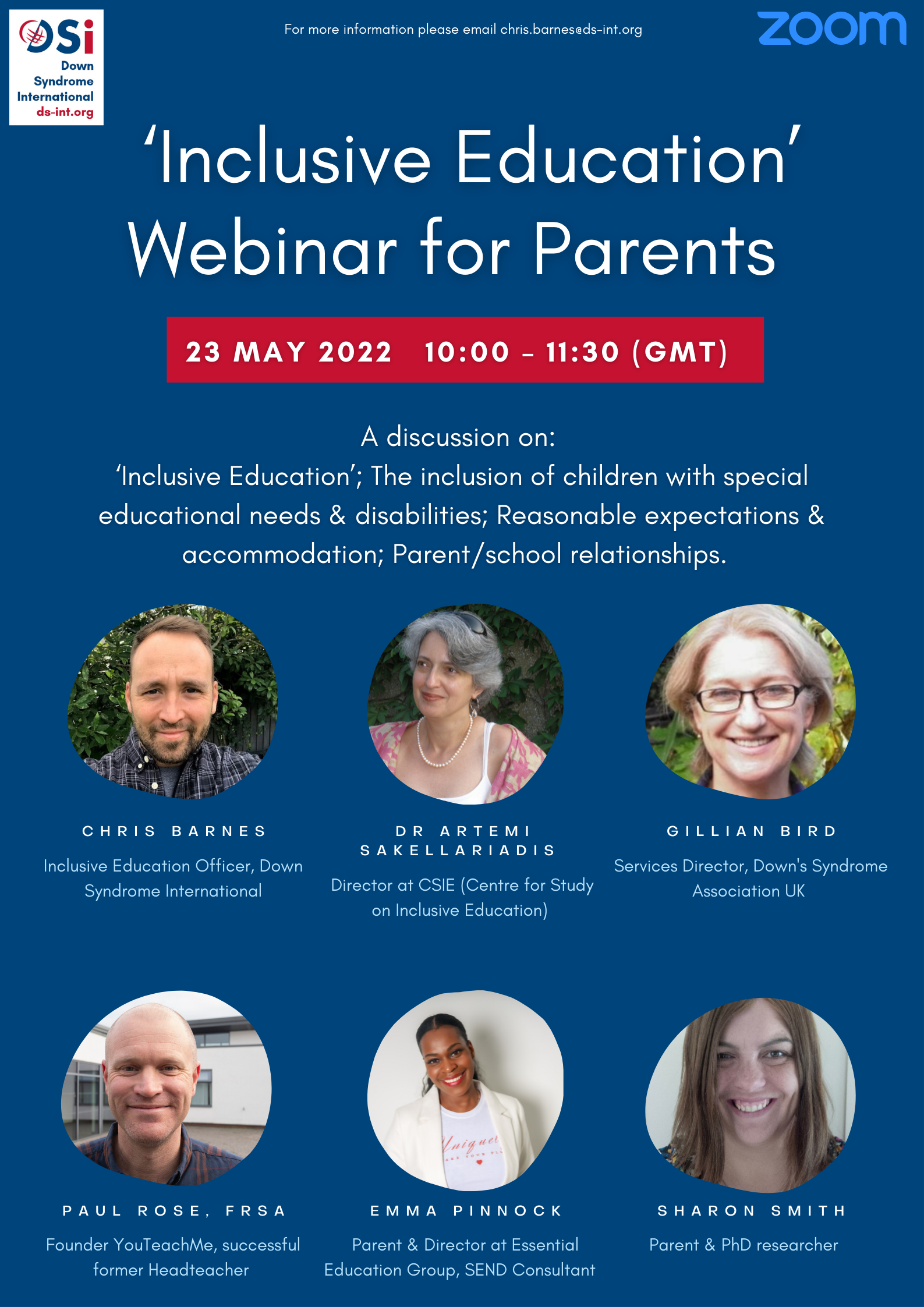Inclusive Education for All #15
18 May 2022 by Chris Barnes, Inclusive Education Officer, Down Syndrome International
The quest for parents wanting their child to be ‘included’ at school can be traumatic and exhausting. All over the world, parents wish for an equal chance for their child to be taught alongside children of the same age. Depending on where you live and what schools are nearby, the chances of this happening vary considerably. One thing that is constant is the parents’ concern for their most treasured possession – their child.
Please accept the following as thoughts, (for stressed, over-worked teachers) not instructions!

It’s important for teachers to meet the parents where they are in their child’s education journey, by listening and showing compassion.
Listen to what the parents say, what their expectations and hopes are for their child, what their child is like – their interests, hobbies, ‘needs’ and challenges. Don’t make promises you can’t keep but agree to work together in a joint endeavour.
Try to talk openly, positively, and candidly as often as possible, not just in arranged meetings and not only about teaching.
Learn the parents’ names and try to keep up with the child’s extra-curricular activities. I have found that showing an interest in the life of a family goes a long way to building a lasting relationship.
Involve the parents in general planning for their child’s inclusion.
Families are often well placed to offer advice and ideas for what will or won’t work, and should be consulted on issues such as self-care, socialising, breaktime routines, and eating etc, amongst other things. Let parents know in advance of any major changes to routines by establishing lines of regular, informal communication.
If you’re not already, consider a home/school communication diary that is checked by both parties daily.
This is a great way to pass on key messages, or to make requests. A quick, honest scribble each day outlining any successes or problems can help allay frustrations.
If the child in question is supported by a teaching assistant try to ensure that you, as class teacher, don’t leave all of the communication to them.
An assistant will inevitably/hopefully build a good relationship with the family, but it is also your duty to keep the lines of communication open.
Effectively including a child is a team effort.
Involve other staff members where appropriate (including the special educational needs & disabilities co-ordinator and senior staff, of course) and introduce them to parents, thereby helping the family to feel more welcomed and included in their child’s education.
Lastly, but by no means least, while not in the teacher’s handbook/job description, involve the parents of neurodivergent children alongside all other parents.
This may be in the way of online communications, school/class blogs, or conversations outside of the classroom. Parents can feel different or excluded, as well as their children, and simple introductions or requests can help to establish bridges between them. In my experience and research, the most effective ‘inclusion’ is made more possible when the whole school community firstly realise the importance, then pull together to make things happen.
In this video, Natalie Long, a teacher outlines some of her top tips on building a good working relationship with parents:
What a brilliant responsibility and opportunity teachers have to introduce people of all ages to more inclusive and open-minded ways of thinking and seeing!
If you are a teacher in the UK, or internationally, and would like to share your views on these matters, please get in touch with me.
Inclusive Education Webinar for Parents
23 May 2022 | 10am | FREE
Join Chris for a discussion led by industry experts and parent advocates on the effective inclusion of all children within mainstream settings. Click here or on the image below to register your place.
Next time we start looking at teaching – ‘What can an inclusive lesson look like?’

